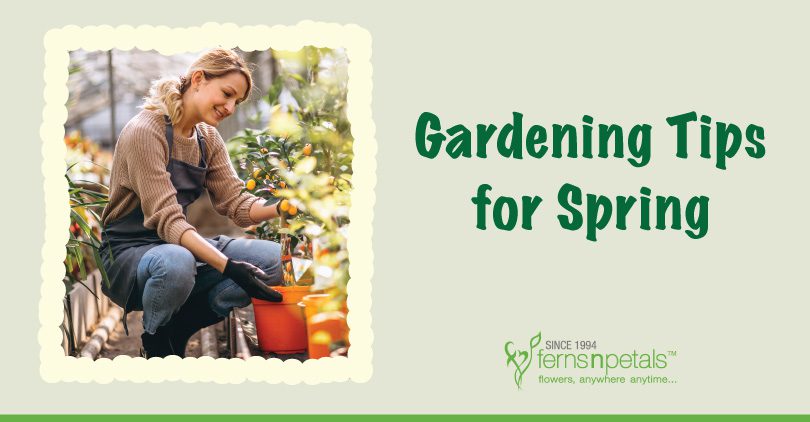Spring: a lovely reminder of how beautiful change can truly be.
-Anonymous
Spring is the most beautiful season of the year. It is time to get back to your garden to assess the damage caused by the long, harsh winter and nurture the spring blossoms. Gardening is a productive hobby that brings joy to people’s lives. But sometimes you may feel overwhelmed about where to begin. Here are some gardening tips for spring to help you nurture your garden as it comes back to life.
Time for inspection
Head out to the garden and see what all happened during the winter. Check for any possible cold or snow damage on plants. Do check if any flower beds need cleaning.
Focus on hardscaping
Repair damaged retaining walls. Fix fences, benches, or raised beds. Level out the stepping stones and clean all the gutters. You can also build new raised gardens or widen existing ones. Add a fresh coat of paint to elements made of wood.
Clean up the garden
Cleaning the garden will help to keep pests at bay. If you have a pond or water feature installed in your garden, it is an excellent time to clean them. Scrub and sterilize the water containers before setting them back into the garden.
Revitalize the soil
The soil is likely to be dried out after winter. The arrival of spring is the time to add moisture & organic material to the soil. You should also test the soil to see what nutrients it needs and provide it with the required elements to increase the life of plants.
Trim old plants
Spring is an excellent time to trim woody shrubs and trees. Start by pruning the plants that have been broken or damaged by winter ice. The flowering shrubs which bloomed this year can be trimmed in spring. Do not prune the flowering shrubs that bloom on last year’s stems in spring.
Divide perennials
Once new growth appears, it’s time to divide perennials. Transfer the extra clusters into vacant spots. You can also share additional plant cuttings with friends and neighbours.
Add Mulch
Along with fertilizers and organic materials, add mulch to your garden and flower beds. It helps prevent weeds and diseases, moisturizes the garden, and maintains the temperature. Keep the mulch a few inches away from the plant stems to prevent roots from rotting.
Start planting
Grow plants and flowers that thrive at this time of the year. Start sowing seeds of vegetables and annuals indoors 6-8 weeks before the last frost. Allow seedlings to gradually acclimatize to the outdoor conditions before planting them in the garden.





